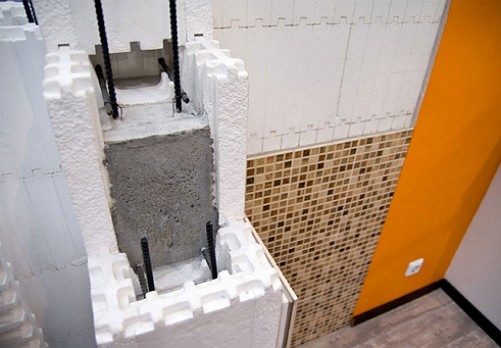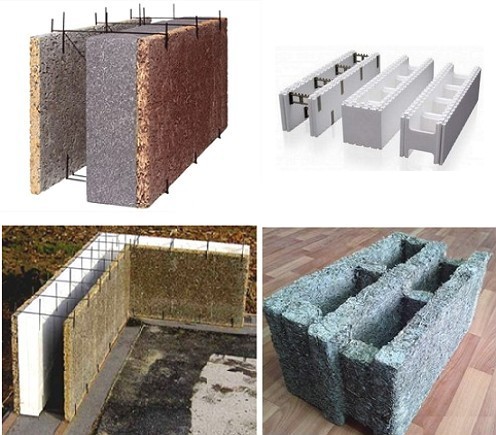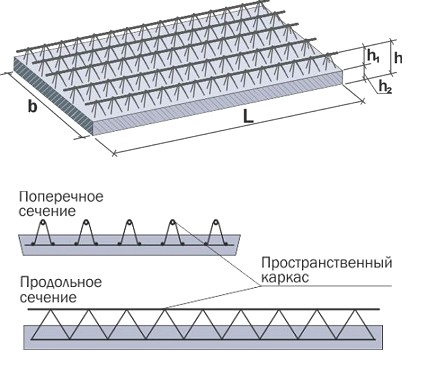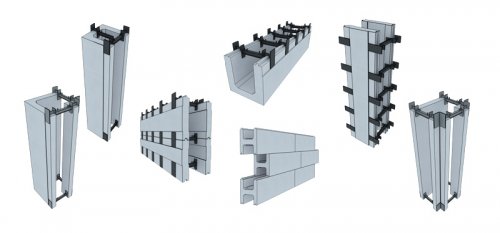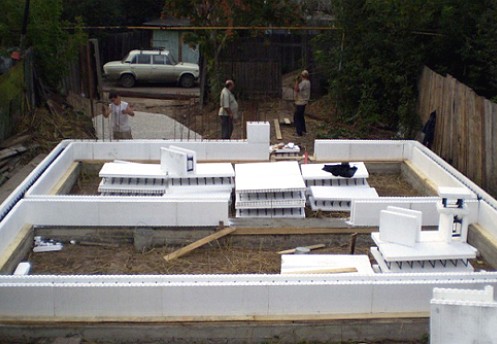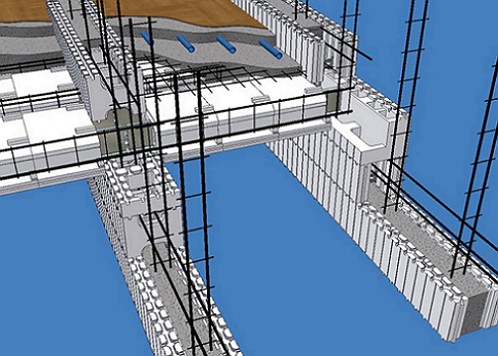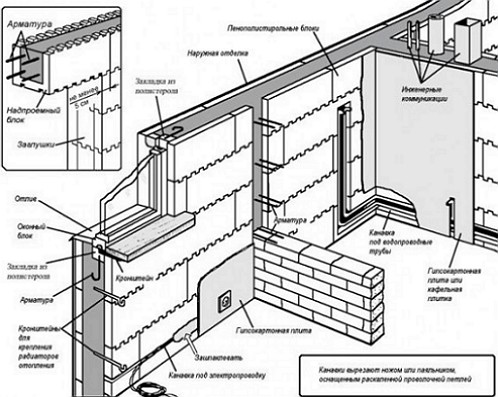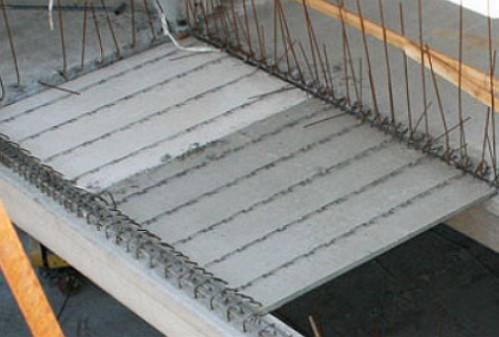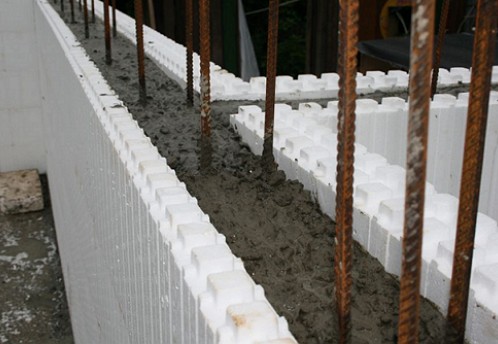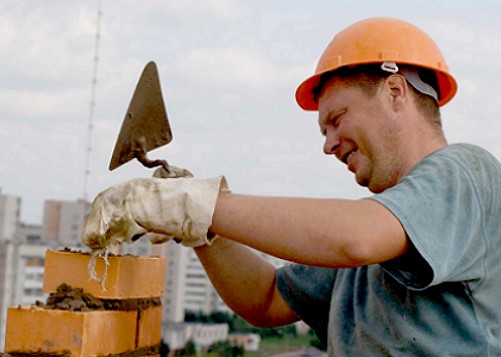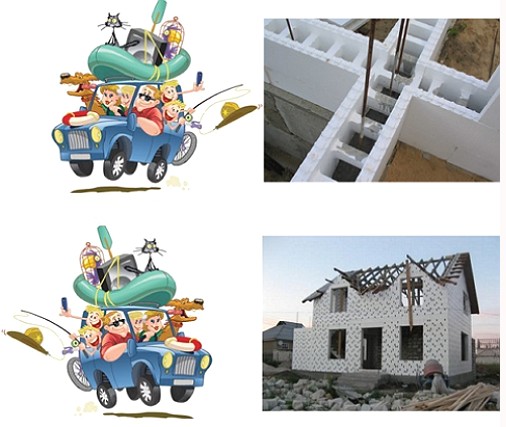The technology of formwork construction, ideally, pursues a single goal: the creation of a monolithic block of the foundation or the wall of the structure. The innovative method of low-rise construction of private houses for these purposes uses the technology of fixed formwork. Excellent compressive strength of expanded polystyrene and low dynamic rigidity promise to support a growing monolithic design. How correctly to build a mold from expanded polystyrene, in order to preserve the integrity of the crumbling material?
Content
Forms for filling mixtures
Among the construction measures, the construction of the formwork is generally accepted and technologically sound. Any form of formwork is carried out according to certain rules and sequences.
In the course of production and manufacturing, it is recommended that the following steps be carried out: preparation of the formwork, installation on a trench and pouring a mortar. With regard to the filler mixes, the formwork is divided into two types:
• Removable formwork, installed for pouring ready-mixed concrete with subsequent removal
• non-removable formwork, installed with the prospect of including its parts in the functional part of the structure.
The complex of these measures in full refers to the construction method - a fixed formwork made of expanded polystyrene.
For the construction of a non-removable formwork, use:
• shchepotsementny composition
• Fibrolite (arbolite)
• expanded polystyrene.
The surface of the shchepotsementnoy formwork is protected by a technological solution that creates an excellent sound and heat insulation layer. Fibrolitic (arbolitic) formwork contains small wood chips and caustic magnesite.
For the production of formwork made of polystyrene blocks, the polystyrene formed according to the technological cycle is used.
The technology of non-removable formwork, successfully tested in European countries, is no longer experimental.
Today there are such technological measures:
- formwork technology "Plastbau-3"
- reinforced panels (armopanel).
However, for a number of reasons, the formwork made of expanded polystyrene, the price of which can be considered affordable, caused and causes different opinions and emotions.
Structural design of expanded polystyrene
The construction of expanded polystyrene formwork can be called simple. This is really so, because formwork consists of the following parts:
• blocks of wall assembled PSB-S-25T
• metal-plastic lintel
• End plugs.
Despite the simple design, the foundation for polystyrene foam for the foundation is solid blocks that represent a hybrid technology of monolithic construction on the basis of hollow blocks. Blocks are collected on an existing foundation, reinforced in height and poured with concrete. As a result of solidification of the mixture, a monolithic wall is formed.
We will not hide, accessibility, and the speed of the construction of a fixed formwork for the base bribes. However, in the production of work on pouring there are misunderstandings and errors that entail the deformation of expanded polystyrene blocks. To avoid this, it is necessary to strictly adhere to the technology of formwork.
Formwork technology
The technology of manufacturing non-removable formwork consists of the stages:
• Installation of PSB-S-25T units
• Stacking reinforcement (reinforcement)
• casting with a concrete mix.
Technologically, the formwork of PSB-S-25T blocks provides the following operational parameters:
The thickness of the structure is up to 25 cm with concrete consumption of 0,12-0,14 m3 / m2 and the flow rate of the reinforcement is about 10 kg / m2. The thermal conductivity of the formwork reaches 0.036 W / mK, the vapor permeability is 0.032 mg / mPa, with acoustic insulation equal to 46 dB.
non-removable formwork made of expanded polystyrene
Structurally and technologically, each PSB-S-25T unit has in its lower part grooves and projections, with which the blocks are easily assembled. A simple, at first glance, lightness of the connections ensures a tight connection between the units.
It is recommended to pay attention when assembling the conjugation of the planned contours, according to the dimensions of the structure. This will be signaled in the necessary places for bends for internal partitions. The first row of formwork is installed on the prepared waterproofing foundation covering.
To strengthen the rigidity of the construction, subsequent blocks, beginning with the 2nd row, are recommended to be displaced relative to the previous row. Classic brick masonry will provide rigidity to the ordering.
The reinforcement is laid horizontally in each row along the entire perimeter. The diameter of the reinforcing bars to be laid must correspond to the dimensions of the blocks and the existing diameters of the metal-plastic bridge of the block. The lengths of the rods are overlapped, then twisted with the vertical pins of the foundation, and connects with each other.
Such tying and reinforcement reduce the internal pressure of concrete on the walls of the non-removable formwork. After the strapping and reinforcement we produce the traditional filling with a concrete mix.
Thus, it is possible to generate a conclusion that formwork is not removable in speed of erection, simplicity of installation and cost exceeds existing formwork technologies.
However, contradictory feedback on the construction of a formwork of fixed polystyrene foam makes us think about the expediency of holding events. Why? Study some reviews.
For example, review the former builder, who worked all his life in house building. "I vowed and once again noted the inconvenience of working with foam products and styrofoam in particular. The haughty and raspiennaya "ease of installation" in the end turns into a violation of the structure of the material blocks. When pouring a concrete mixture and then ramming, God forbid, touch with an iron shovel over the edge of the formwork. We have to work as a sapper, armed with a wooden handle. "
And here's another review: "On Friday night we went to your country cottage. Passing by the house under construction of the cottage village, we noticed how quickly and cleverly the team pours the fixed formwork of the basement with a concrete mixture.
Two days later, namely on Sunday evening, we drove past the same house under construction, and did not believe our eyes: the brigade was finishing the construction of the second floor. "
It is known that the contradictory nature of opinions gives rise to truth. I want this to happen in our favor, so that the building has an inexpensive and practical formwork, because the technology of the "wet façade" is used everywhere. Although the untreated technology of the "wet facade" was originally considered harmful.



